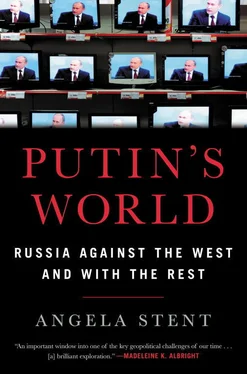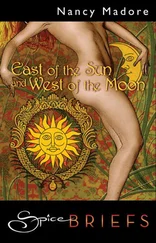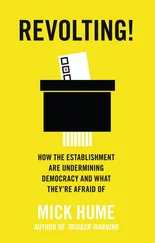Although Yeltsin did not succeed in retaining a Russia-dominated integrated Commonwealth of Independent States military force in 1992, he created the nucleus of a multilateral military alliance, which became the Collective Security Treaty Organization (CSTO) in 2002. Putin aspires to develop CSTO into the equivalent of a Eurasian NATO, but it remains a pale replica of NATO. Unlike NATO, CSTO does not have an Article 5 committing its members to come to each other’s collective defense should one be attacked. 19Indeed, Russia has never invested in creating the structures required to underpin such a commitment. CSTO members are Russia, Armenia, Belarus, Kazakhstan, Kyrgyzstan, and Tajikistan. Its secretary-general until 2017 was Nikolai Bordyuzha, a former secretary of the Russian Security Council. 20The new head is Yuri Khachaturov, ex-head of the Armenian general staff.
CSTO’s members are divided into three groups: Western (Belarus and Russia), Caucasus (Russia and Armenia), and Central Asian (Russia, Kazakhstan, Kyrgyzstan, and Tajikistan). CSTO has also created a rapid reaction force of 22,000 troops, of which 10,000 are Russian, but not all members participate in the force. Moreover, CSTO’s credibility was seriously eroded during the outbreak of ethnic violence in Kyrgyzstan in 2010—resulting in more than 400 casualties—when, despite appeals by the Kyrgyz president for the CSTO to intervene, Moscow refused to get involved and deploy peacekeeping forces. 21The CSTO’s effectiveness is also hampered by lingering mistrust among its members that Russia is trying to limit their sovereign decision-making and by tensions between individual members. For instance, Armenia would like its allies to commit to supporting it in its conflict with Azerbaijan, but they have demurred.
Moreover, Putin’s repeated attempts to have NATO recognize the CSTO and develop a partnership with it have been rebuffed. In the words of a US official opposing formal ties between the two organizations, the CSTO “is an organization initiated by Moscow to counter potential NATO and US influence in the former Soviet space.” 22So while NATO cooperates with individual members through their Partnership for Peace programs, there is little prospect of Brussels being willing to work with the CSTO itself. CSTO member states, especially those in Central Asia, would like the organization to serve as a bulwark against color revolutions—by political opponents or religious extremists—but ultimately their mistrust of each other and doubts about Russia’s commitment to back them up in the face of a public uprising highlight the limits of Russia’s Eurasian integration projects.
Ramzan Kadyrov, the Chechen Ruler
Concerns about the dangers of Islamic extremism extend from Central Asia to Russia itself, particularly to Chechnya. Because of these threats, Moscow’s goals in the near abroad are inextricably linked to what has been called Russia’s “inner abroad,” the North Caucasus. 23These six multiethnic Muslim-majority republics are part of the Russian Federation but far less integrated into it than its other eighty territorial subjects. They have presented a major challenge to the Kremlin since the Soviet collapse because a combination of separatism and religious fundamentalism has created a persistent low-level insurgency and terrorism in Russia’s south. The most problematic republic is Chechnya, with whom the Kremlin has fought two wars since the Soviet collapse. Indeed, Putin’s rise to power in 1999 was facilitated by his launch of the Second Chechen War in 1999. Justifying his actions then, he famously said of his Chechen opponents, “Pardon my language, if we catch them in the toilet, well, then we’ll whack them in the outhouse.” 24
Two of the most lethal terrorist attacks in Russia were the 2002 seizure of the Dubrovka Theater in Moscow by Chechen terrorists, which resulted in 130 deaths, and the 2004 seizure by Chechen and Ingush terrorists of an elementary school in Beslan, North Ossetia, in which 331 people perished, 186 of them children. There also have been terrorist attacks carried out by Chechens and Central Asians in the Moscow and Saint Petersburg subways and at Moscow’s Domodedovo Airport.
Today Chechnya is ruled by Ramzan Kadyrov, a strongman who runs his fiefdom with an iron hand. He apparently enjoys an extravagant lifestyle. According to a leaked US diplomatic cable, his exploits include attending a thousand-person wedding in neighboring Dagestan, where he “danced clumsily with his gold-plated automatic stuck down the back of his jeans,” after which he showered guests with hundred-dollar bills. 25Putin and Kadyrov made a deal after the end of the Second Chechen War. Kadyrov promised to pacify the republic if he were allowed to run it without interference from the Kremlin. Today, with extensive financial subsidies from Moscow, Chechnya is quiet, but the laws of the Russian Federation barely extend to its territory, where Kadyrov’s draconian and capricious interpretation of sharia law prevails. Kadyrov has sent Chechen battalions to fight on Assad’s side in Syria and to join the separatists in the Donbas—although there are also Chechens supporting the Ukrainian side. 26A substantial number of fighters who have joined the Islamic State in Syria and Iraq are Chechens too, an estimated three to four thousand. 27
Kadyrov is outwardly hyper-patriotic. “We say to the entire world that we are combat infantry of Vladimir Putin,” he has announced. Kadyrov and his supporters have been linked to the assassination of opposition leader and Putin critic Boris Nemtsov in the shadow of the Kremlin, and so far the Chechen who pulled the trigger has been convicted, but not the person who ordered the murder. Some Russians believe that Putin has made a Faustian bargain with Kadyrov to maintain the peace in Chechnya, the consequences of which could one day come to haunt him. Kadyrov, in this view, has considerable leverage over Putin. But others believe Kadyrov serves a useful purpose for Putin because he can threaten Putin’s opponents without the Russian leader having to do it himself. According to Alexei Venediktov, editor-in-chief of Russia’s last remaining independent radio station, Echo of Moscow, and a target of Kadyrov’s wrath, “Just like anyone with unlimited power, who faces no borders at all, he tries to expand his influence as much as possible.” 28
FROZEN CONFLICTS
Frozen conflicts in the post-Soviet space began before the USSR collapsed and persist today. They are areas where fighting has waned but no peace treaty or other political framework has resolved the situation to the satisfaction of the combatants. The conflicts have created four unrecognized statelets in which Russia continues to exercise influence. Vladimir Putin did not create the frozen conflicts in Eurasia, but he has used them to enhance Russia’s leverage in the post-Soviet space. Their persistence means that none of the three states of the South Caucasus—Armenia, Azerbaijan, and Georgia—fully controls its own territory, and neither does Moldova, which shares a border with Romania and Ukraine. The four frozen conflicts resulted from the wars of Soviet succession. Although the Soviet breakup itself was relatively peaceful, ethnic strife in these regions broke out under Gorbachev and intensified after 1992 to produce four unrecognized entities. The failure to bring the conflicts to an end guarantees that these statelets will remain weak and beholden to Russian economic largesse and military support in the absence of international recognition.
Nagorno-Karabakh
The first of the disputes to erupt was in Nagorno-Karabakh, an Armenian-majority enclave within Azerbaijan. It is the longest-running secessionist conflict in Eurasia. In 1989, the ethnic Armenians—representing 80 percent of the enclave’s inhabitants—complained of cultural discrimination and economic underdevelopment, and demanded that the enclave be transferred from Azerbaijan to the Armenian Soviet Socialist Republic. Christian Armenians view Muslim Azeris—whose language is Turkic—as being closely allied to Turks, and they associate them with the Armenian Genocide under the Ottoman Empire. The ethnic enmity between the two groups was suppressed under the Soviet system but reemerged as soon as Gorbachev began his liberalization program.
Читать дальше












